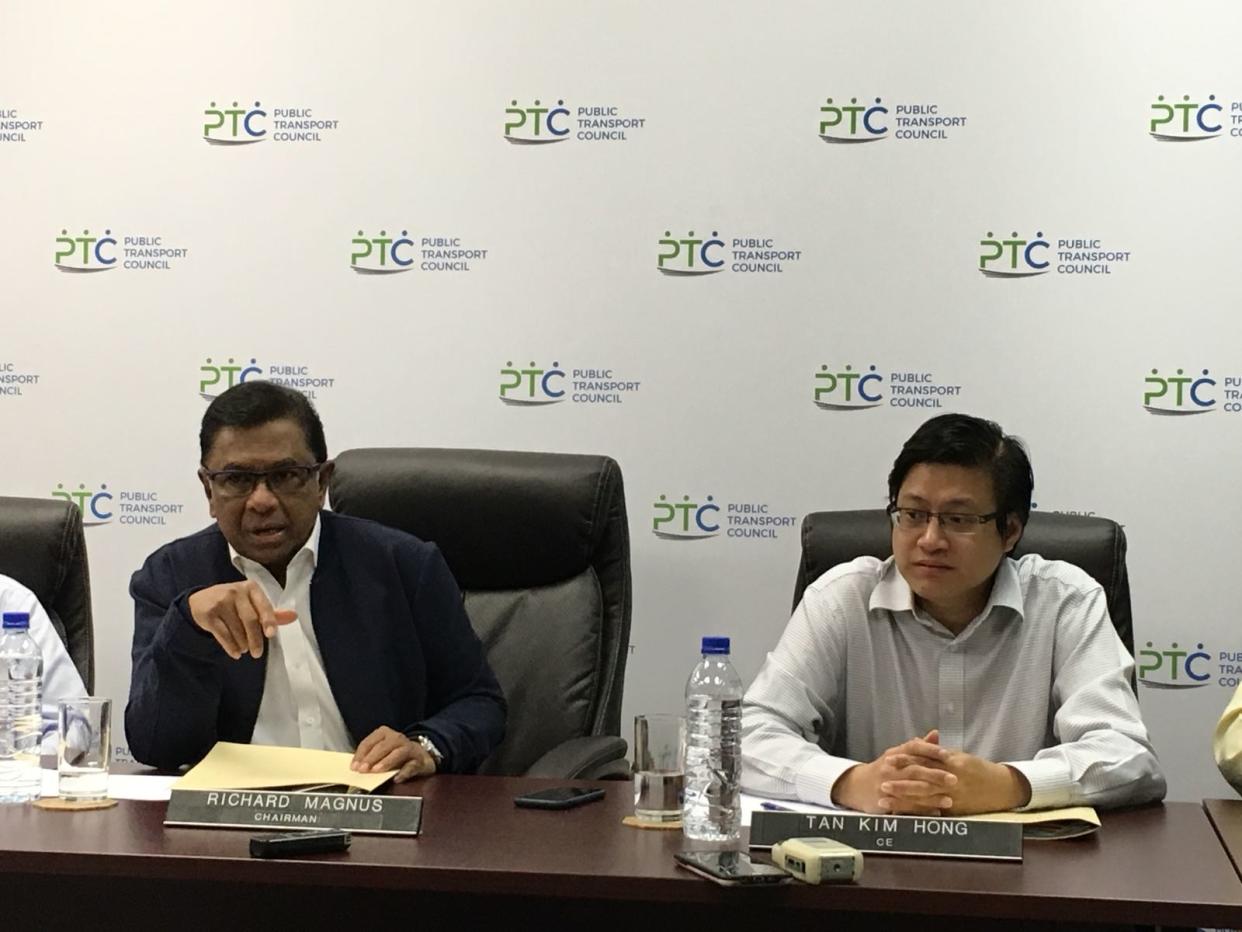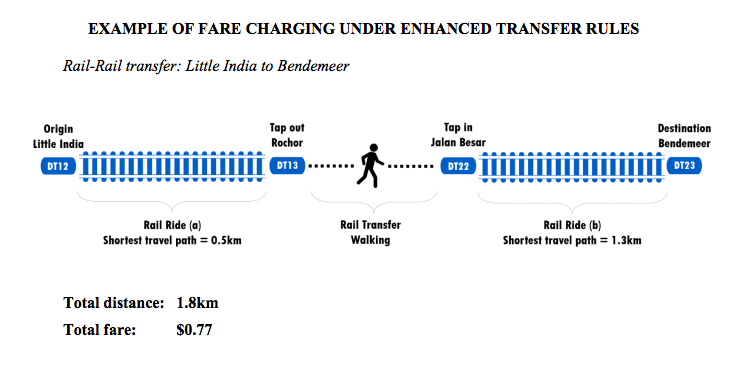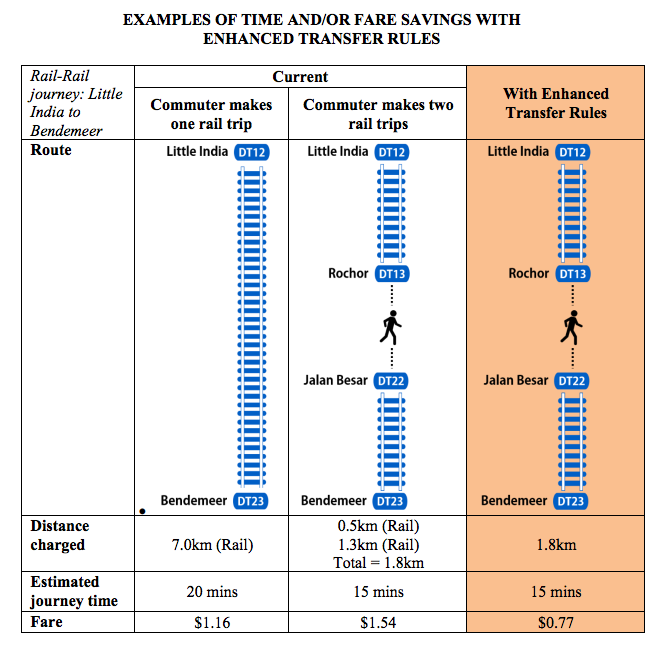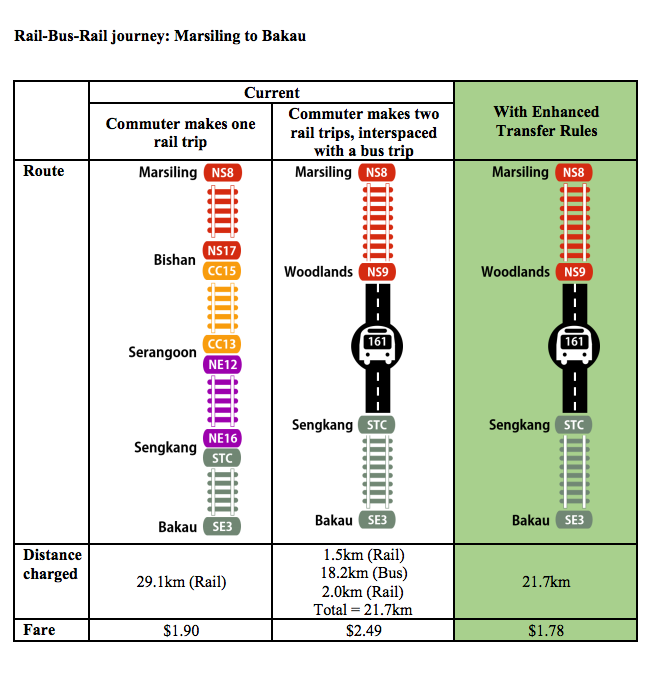Public transport fare formula to be revised amid rising costs: PTC

In the latest hint of a possible increase in public transport fares, the Public Transport Council (PTC) said on Thursday (22 March) that it will be revising its fare formula to “keep pace with changes in the public transport industry’s cost structure”.
Also announced were more flexible rail transfer rules for commuters, including the scrapping of additional boarding charges for those transferring between MRT or LRT stations within 15 minutes.
“Our public transport landscape is evolving at a tremendous pace to improve commuter service standards. To remain relevant, our fares, including the transfer rules, have to be adjusted to the market dynamics as well as commuter needs,” said PTC chairman Richard Magnus during a press briefing on the fare adjustment.
“This is critical in ensuring the long-term financial sustainability, ease and seamlessness of our public transport network.”
Asked if public transport fares would increase, Magnus said, “I’ll tell you that I don’t know”.
However, he noted that in the PTC’s discussions with commuters, the council had found that there was an “expectation on the ground” that transport fares will be increased. He added that commuters spoken to were “quite happy to bear higher fares” as they recognise the cost of improving the transport network.
Magnus’ comments echoed the views of Transport Minister Khaw Boon Wan during his ministry’s Committee of Supply debate earlier this month. Khaw had called the current fare formula “inadequate” and said it could be better improved to track total costs.
“Cheap fares are popular, they are just not sustainable,” he said.
Keeping the network sustainable
The PTC, an independent body that regulates public transport fares, conducts regular reviews of its fare formula – typically done once every five years. The formula then becomes the basis for deliberation for the PTC’s annual fare review exercise.
In a news release on Thursday, the PTC noted that public transport capacity had been increased by around 25 per cent from 2012 to 2017. Over 1,000 new buses and around 200 new trains were introduced over this period, while the length of the nation’s rail network has also increased by 74km.
“These capacity upgrades and network expansions are necessary and have been welcomed by commuters. However, they come at a cost,” said the PTC, adding that annual operating costs had increased by $900 million between 2012 and 2016.
Over the same period, annual fare revenue rose by around $230 million – largely due to ridership growth – but this covered only about 25 per cent of the annual operating costs.
The PTC release added that fares had been reduced for the past three consecutive years – mainly due to subdued energy prices – and that the government provided substantial subsidies to cover the operating expenditure shortfall.
In order to address the “widening gap between cost and fares”, the PTC will be introducing a Network Capacity Factor (NCF) component into its fare formula. The NCF is intended to track cost movements due to public transport capacity changes and commuter demand.
“As the NCF is intended to track the structural changes to operating costs, the changes in capacity and usage attributed to new rail lines will only be computed into the NCF 18 months after they open for revenue service,” said the PTC adding that this would allow time for “ridership to stabilise and to reduce volatility in the NCF”.
Even with the NCF, however, the government will continue to provide an estimated $9 billion in subsidies for public transport services over the next five years.

Regarding the change in rail transfer rules, the PTC said that this would cater for the expected increase in the number of commuters who will use a combination of rail rides to reduce their travelling time.
This could include making a walking transfer between nearby stations and continuing their journey with another ride on a different rail line, it added. According to the Land Transport Authority website, there are currently 18 pairs of MRT stations within walking distance of one another.
Scrapping the additional boarding charges would facilitate “more efficient and seamless public transport journeys” for such commuters, said the PTC.
The changes to the fare formula and transfer rules will kick in following the results of the PTC’s Fare Review Exercise. According to Magnus, the new fare quantum will be announced in the third quarter of this year.


Related stories:
Commuter satisfaction with public transport dips following MRT incidents: PTC survey
PTC begins review of fare adjustment formula
Cheap public transport fares ‘popular but not sustainable’: Khaw Boon Wan



